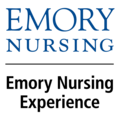 Wound Healing Physiology is a Course
Wound Healing Physiology is a Course
Wound Healing Physiology
Self-paced
5 credits
Sorry! The enrollment period is currently closed. Please check back soon.
Full course description
Course Description:
In this course, we'll take a deep dive into the ways that the body repairs itself when it suffers skin injury. We will also look closely at identifying the appropriate wound repair strategies based on the type of wound, the characteristics of the wound and the progressive state of the wound as the body repairs itself. We will also consider when surgical interventions should be recommended.
This course has been created by Emory’s Wound, Ostomy, and Continence Nursing Education Center (WOCNEC).
Accredited since 1976, Emory WOCNEC provides nursing education related to acute and chronic wounds, fecal and urinary diversions, and fecal and urinary incontinence.
Target Audience: All RN's interested in understanding more about wound healing physiology.
Objectives:
- Identify the two mechanisms by which the body repairs itself
- Identify the repair process for lesions
- Define the following terms: partial-thickness wound; full-thickness wound; primary intention; secondary intention; tertiary intention
- Describe the process for partial-thickness wound repair, and the impact of a dry vs. a moist wound surface on the repair process
- Outline the process for repair of full-thickness wounds to include the major phases, key events in each phase, and the cells mediating each phase
- Explain the difference in the repair process for acute full thickness wounds (e.g., sutured incisions), and chronic full-thickness wounds (e.g., dehisced incision or pressure ulcer)
- Explain the role of each of the following in regulation of wound healing: bioactive molecules (growth factors and cytokines); extracellular matrix proteins; extracellular matrix itself
- Compare the characteristics of a wound in the inflammatory and the proliferative phase, and identify key nursing interventions for each
- Identify 2 factors that cause prolongation of the inflammatory phase
- Identify patients who should be referred for surgical intervention rather than being allowed to heal by “secondary intention”
- Compare and contrast acute wounds and the acute wound healing process with chronic wounds and the chronic wound healing process; include the concentration of inflammatory versus proliferative mediators in the wound fluid
- Identify at least 6 factors that impact on the repair process, and nursing implications for assessment and intervention
Contact Hours:
Emory Nursing Professional Development Center (ENPDC) is accredited as a provider of continuing nursing education by the American Nurses Credentialing Center's Commission on Accreditation. Attendees to this CNE activity will be awarded 5.0 contact hour by ENPDC.
Participants in this course will also earn a digital badge that can be used on their social media channels.
Need Help with Registration? Please contact us at ene@emory.edu or 404-727-9208.

